Last month, we had a look at an entry-level LCD TV from LG, and were somewhat impressed by what we saw. As is typical for the brand’s LCD output, we found that much of the television’s colour reproduction could be fine-tuned to perfection, but were disappointed by the mediocre contrast performance and undefeatable over-sharpening. Today, we have the opportunity to go higher up the range and investigate a 42″ LED-based LCD TV from the company: the LG 42LE5900. This HDTV fits roughly in the middle of the company’s huge TV range, meaning that it’s 2D only, features full 1080p HD resolution, and is one of many new displays featuring an ultra-slim design, thanks to LED side-lighting.
<!-- google_ad_client = 'pub-2887677957235196'; google_ad_slot = '4990177225'; google_ad_width = 336; google_ad_height = 280; //-->
Of course, spec sheets don’t tell us about Greyscale purity, colour accuracy, black level performance, or input lag… that’s our job! Read on to see if the LG 42LE5900 LED TV can deliver impressive mid-range performance.
Note: While we did not test the 37-inch LG 37LE5900 nor the 32-inch LG 32LE5900, we do not expect any significant difference in picture performance given nearly identical specifications.
The LG 42LE5900 is one of many super-slim LED-based LCD TVs on the market today. It doesn’t push the envelope in terms of its styling, but sticking to a successful formula is no bad thing. Appearing to take some concessions from that Samsung school of TV design, the bezel (sadly styled in scratch-prone gloss black) features a red-tinged outer edge, which includes an additional layer of light glittery material below it. The bottom-right corner features touch-sensitive zones (instead of unsightly, but arguably more practical buttons). Additionally, there’s a glowing grey-blue “LG” logo in the middle of the bottom strip.
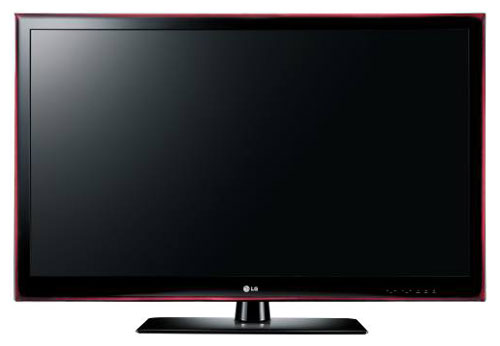
With the aid of a metallic support, the panel itself sits (slightly precariously) on top of a gloss black stand. We had to balance the LG 42LE5900 LED TV on a soft, cushioned surface to actually attach the said stand, making install a little awkward, but the process was still painless enough.
The LG 42LE5900 features the now-standard 4 HDMI inputs, which should be enough for almost any connectivity purposes. However, the fact that it features not one, but two sets of Component video inputs is notable for a European model. Two sets of these inputs is commonplace in the US, Canada and Australia (and Japan typically receives two or more sets of their equivalent “D-Terminal” inputs), but as usual, European models typically receive the short end of the stick and feature only one set, the other being replaced by a lower-quality SCART connection. Needless to say, we’re glad that LG has seen fit to break this trend in Europe, although it would have been more appreciated a few years ago before HDMI had taken over.
One of the LG 42LE5900’s two Component inputs is in the form of RCA jacks, the other requires a break-out adapter cable to be used (it’s included in the box). Although Component video isn’t as relevant as it was five years ago, there are still devices out there that require it for their highest quality video output (all Nintendo Wii consoles, as well as older Xbox 360s and DVD players). Owners of these will be able to plug both into the LG 42LE5900 simultaneously without having to involve switch-boxes.
The LG 42LE5900 does feature an RGB SCART terminal, for connecting devices such as an SD satellite or cable box to. There’s also a PC “VGA” input, and USB ports.
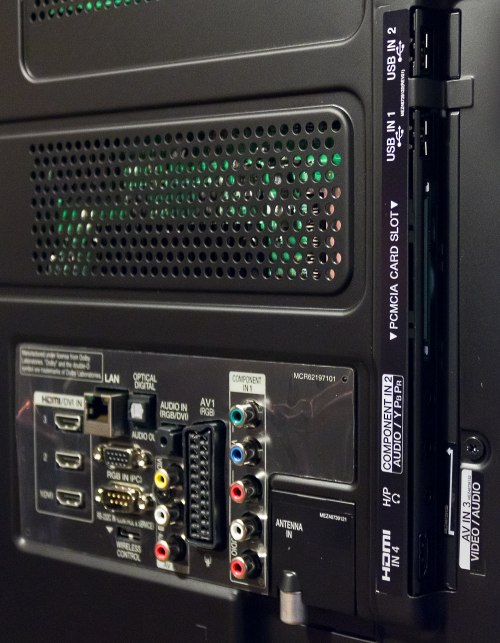 |
| Rear & Side: 4 x HDMI, VGA, 2x Component, 1 x Scart, aerial, ethernet & audio outs |
LG’s familiar purple-and-grey on screen menus are present on the 42LE5900 LED TV. A quick scroll through them reveals just about all of the picture controls we could hope for on a mid-range HDTV display. On top of the basic adjustments, there is precise control over the [TruMotion] system, which, in theory, allows us to wring some extra motion clarity from the LCD panel without introducing the dreaded, unnatural “soap opera effect” into movies. There’s also 10-point control over the LG 42LE5900’s Greyscale tracking (which should allow us to obliterate any unnatural colour tints during calibration) and a decent, yet not fully-fledged colour management system.
![[Picture] menu](https://www.hdtvtest.co.uk/news/wp-content/uploads/2018/04/hdtv_LG-42LE5900_picture.jpg) |
| [Picture] and [Expert Control] menus |
The LG 42LE5900 also features some internet connectivity. To be frank, none of the TV manufacturers’ attempts at providing online connectivity really seem worth the hassle of connecting an Ethernet cable to the back of the flat-screen television – least of all in an age where we have laptops and tablet PCs to do a better job of the same thing. LG’s implementation includes weather forecasts from AccuWeather.com, and connectivity to both YouTube and Picasa.
Note: Our LG 42LE5900 review sample was calibrated using Calman Professional, the industry-leading video calibration software.
After letting the LG 42LE5900 warm up, we selected the [ISF Expert1] picture mode and immediately saw an improvement in the picture quality compared to the [Normal] setting that’s used by default. Whites that had been blue-tinted out of the box now looked more neutral, and the LG 42LE5900 was applying less Sharpening to the image, resulting in a less harsh, outlined look.
Using our Klein Instruments K-10 meter, we then ran a series of measurements to determine exactly how in-spec the LG 42LE5900’s Greyscale reproduction was – in other words, whether or not it was reproducing grey shades without any unwanted colour tinting.
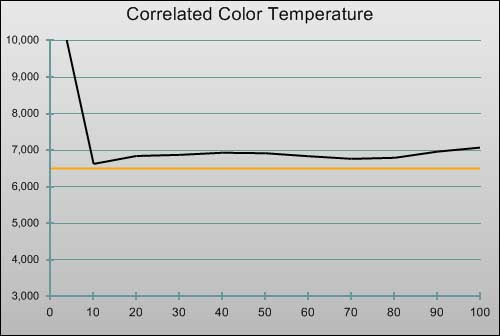 |
| Pre-calibration CCT in [ISF Expert1] mode |
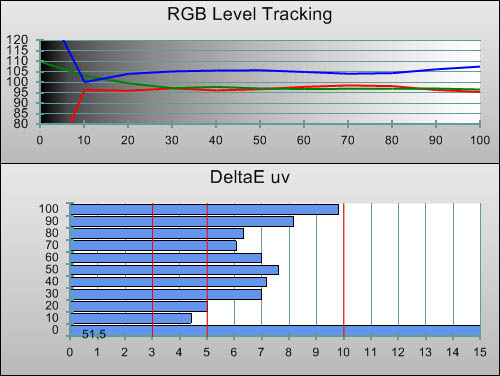 |
| Pre-calibration RGB tracking and delta errors (dEs) |
The above charts reveal that prior to being calibrated, the LG 42LE5900 was displaying video with a slight excess of blue in the image. This is not a hugely visible error, and for an HD TV that’s not been calibrated, is a good result. Most notable is the consistent, linear nature of the error: with the exception of small bumps at 10, 90 and 100 stimulus, the amount of excess blue in the image is almost entirely consistent. This is an early sign that the LG 42LE5900 will be very easy to calibrate, without any huge problem areas.
![Post-calibration CCT in [ISF Expert1] mode](https://www.hdtvtest.co.uk/news/wp-content/uploads/2018/04/hdtv_LG-42LE5900_post-cct.jpg) |
| Post-calibration CCT in [ISF Expert1] mode |
![Post-calibration RGB Tracking in [ISF Expert1] mode](https://www.hdtvtest.co.uk/news/wp-content/uploads/2018/04/hdtv_LG-42LE5900_post-rgb.jpg) |
| Post-calibration RGB tracking and dEs in [ISF Expert1] mode |
Before using the LG 42LE5900’s 10-point Greyscale calibration control, we did a basic 2-point calibration as a starting point. Because the Greyscale tracking was so linear to begin with, this resulted in highly accurate, and totally acceptable images. We then used the 10-point control to flatten out the few mildly troublesome areas that still existed. The result was complete perfection: the colour of grey shades could hardly be any more perfect.
![Gamma curve in [ISF Expert1] mode](https://www.hdtvtest.co.uk/news/wp-content/uploads/2018/04/hdtv_LG-42LE5900_post-gamma.jpg) | |
| Gamma curve in [ISF Expert1] mode | Corresponding gamma tracking |
Gamma tracking (which describes the amount of light put out by the TV relative to the incoming video signal) was also of a very high standard. We did experiment with the 10-point Greyscale control and attempt to flatten out peaks and dips in the chart, but soon discovered that doing so would just create another bump elsewhere. Because these errors are incredibly subtle, we were happy enough to admit defeat.
Like the lower-end LG LCD TV we reviewed lately, the LG 42LE5900 also features several different [Colour Space] options. Initially we tried calibrating with “Standard”, but had difficulty in hitting the correct Hue and Saturation points for Green and Cyan. The errors weren’t huge, but we decided to exhaust every other possibility in pursuit of perfection. As it happens, selecting “Wide” and re-starting the calibration brought us a better result, which would be perfect if it weren’t for some slight errors:
![Post-calibration CIE chart in [ISF Expert1] mode](https://www.hdtvtest.co.uk/news/wp-content/uploads/2018/04/hdtv_LG-42LE5900_post-cie.jpg) |
| Post-calibration CIE chart with reference to HD Rec.709 |
![Post-calibration Luminance levels in [ISF Expert1] mode](https://www.hdtvtest.co.uk/news/wp-content/uploads/2018/04/hdtv_LG-42LE5900_post-colour-lum.jpg) |
| Post-calibration colour luminance (coloured bars = targets; black bars = measured values) |
The end result is excellent, and truthfully, the colour performance out of the box wasn’t bad, either. It could perhaps have been entirely perfect if LG had included separate Hue, Saturation and Luminance adjustments for all six colours, but speaking frankly, we doubt we would be able to actually see the difference with our own eyes (except when comparing to a reference display).
| Dead pixels | None |
| Screen uniformity | “Pinching” in corners, mild blue tint on right side |
| Overscanning on HDMI | 0% with [Aspect Ratio] set to “Just Scan“ |
| Blacker than black | Passed |
| Calibrated black level (black screen) | 0.14 cd/m2 “actual”, 0.02 cd/m2 with [Local Dimming] |
| Calibrated black level (ANSI checkerboard) | 0.14 cd/m2 in all cases |
| Black level retention | Stable in [ISF Expert1] mode |
| Primary chromaticity | Excellent |
| Scaling | Good |
| Video mode deinterlacing | Very effective jaggies reduction |
| Film mode deinterlacing | Passed 2:2 PAL with [Real Cinema] on |
| Viewing angle | Very good for an LCD: slight gamma shift |
| Motion resolution | 600 lines with [TruMotion] on, 300 without |
| Digital noise reduction | Undefeatable “smoothing” on some tones * |
| Sharpness | Defeatable edge enhancement |
| Luma/Chroma bandwidth (Blu-ray) | Full Luma *, slightly blurred Chroma |
| 1080p/24 capability | Judder with [TruMotion] “On”, smooth when “Off” |
| Input lag | 38ms with “PC” input label |
| Full 4:4:4 reproduction | No, 4:4:4 input subsampled |
* Although the LG 42LE5900 resolves full luminance resolution on test charts, do read the “High Definition” section, which details an issue where the LED LCD TV can smooth over certain parts of HD pictures.
| Default [Normal] mode | 102 watts |
| Calibrated [ISF Expert1] mode | 78 watts |
| Standby | 1 watt |
We were pleased to see that, in the [ISF Expert1] mode, the LG 42LE5900 could produce deep blacks. This statement refers not to the panel’s “natural” performance (which measures at a “just OKish” 0.14 cd/m2), but with the misleading [LED Local Dimming] option enabled.
Why “misleading”? Because the LG 42LE5900 is an edge-lit LED LCD set, meaning that unlike “Full LED” sets, the lights are placed around the perimeter of the LCD panel, not behind it. As a result, the LG 42LE5900 cannot precisely control the brightness in many positions of the screen, and can only provide very approximated local dimming. For example, bring up a white box in the middle of the screen, and you’ll notice that while the sides of the panel remain dark, there will be some glowing above and below the lighted area. This is the price you pay for such a slim chassis design. Prospective buyers must remember that with a side-lit LED LCD set such as this one, they are foregoing the enhanced contrast performance of a fully LED backlit display in favour of a slim profile.
With the local dimming option enabled, the LG 42LE5900 could reach down as far as 0.02 cd/m2 (it never shuts its lighting off entirely, like Samsung LED-based displays). Remember, this measurement is taken using a black screen. The ANSI checkerboard test that we’re now routinely performing during reviews gives an idea of how blacks will appear in a “worst case scenario”, that is, when they must exist in the picture alongside bright areas. In this case, the black patches measured 0.14 cd/m2 – almost exactly the same as Panasonic’s LCD TVs, which also use IPS LCD panels.
Typically, we complain about manufacturers boosting LCD contrast performance in this somewhat artificial way. For example, Samsung LED LCD TVs have very noticeable light output shifting (“auto-dimming”) which can be very distracting during actual film and TV content. However, LG’s algorithm for controlling the dimming is considerably less annoying. Don’t get us wrong: if you’re watching a frantically edited action movie with sudden changes from dark to light, you’ll notice the system at work. But, for the most part, the LG 42LE5900 can control its LEDs quickly enough to stop this style-hampered attempt at Local Dimming from being a write-off. Given the average contrast performance of IPS (In-Plane Switching) LCD panels, and the fact that LG seems committed to building HDTVs out of them, it may be a compromise LG LCD owners have to live with. If any users are irritated by seeing the system at work, though, they can always turn it off and live with the native contrast performance of the LCD panel.
In the past, Samsung was the only LCD manufacturer to provide independent control over the Blur Reduction and Judder Reduction of its 100hz/200hz LCDs. Back then, if you wanted to benefit from the enhanced motion clarity of these systems could bring, you would have to endure motion artefacting and the “soap-opera effect”, essentially making them a no-go for film material – albeit useful for fluid video material such as sports.
With the 42LE5900, LG have followed Samsung’s lead and have added in-depth control over the MCFI system. Selecting the “User” [TruMotion] mode allows for the independent control of these two variables. We tested the Judder and Blur reduction features at 0 and 10 respectively, and had a look at some synthetic animated content (which typically shows strange distortion when any sort of motion interpolation is taking place) to confirm that all was well.
We can confirm that the LG 42LE5900 does allow you to avoid the soap opera effect, but unfortunately, there’s an annoying bug in the user interface design. We noticed that sometimes, the LG 42LE5900 LED TV would partake in motion interpolation even when we had instructed it not to do so. It turns out that when you change to a different input (for example, go to the “Antenna” input and then to “HDMI1”), the 42LE5900 will re-enable motion interpolation, despite the on-screen menus indicating that none is taking place. To get around this, we had to disable then re-enable the [TruMotion] setting each time we changed video inputs. This defeated the soap opera effect and gave a suitably good film presentation, but we did also notice that we now had 3:2 pulldown judder in the image, instead of the naturally smooth 24p playback we were looking for (more in the “High Definition” section of this review).
We then confirmed the motion resolution of our configured “User” [TruMotion] mode was somewhere around the region of 600 lines, which is a decent result. On the FPD Benchmark Software disc’s scrolling resolution chart, we could see a marked improvement when the TruMotion system was enabled. Better still, unlike many other LCD TVs (typically PVA-based panels from Sony and Samsung), the LG 42LE5900 didn’t show any obvious black trails as the chart scrolled past. And unlike Plasma TV displays, there were no green/yellow “phosphor trails” leaving coloured streaks.
The LG 42LE5900 does well with standard definition video. For reasons which we can’t quite pinpoint, compression artefacts in poor quality standard-def TV channels (that’s basically all of them) seemed slightly more visible than they have done on some other types of LCD panels – and are certainly more visible than on Plasmas, since they have slight flicker and noise to essentially mask this issue. The size of the panel may have something to do with this, of course.

LG do provide a [Digital Noise Reduction] control to try and block out compression artefacts, but overcompressed video like this is basically beyond repair: even if you manage to remove the compression artefacts with minimal collateral damage, only very specialised (external) processing can actually attempt to recover details lost to aggressive quantization. As a result, we weren’t surprised to see it doing little good.
Better standard-definition content looked good on the LED-based LCD display. The LG 42LE5900 did a good job of disguising jaggedness during the deinterlacing process, and rendered all but the edges of the time-honoured “three rotating bars” pattern on the HQV test disc fairly cleanly. Upscaling clarity was in the “good, but not top-tier” range, on par with Sony and Philips displays (for all we know, they could be using the same core video processing chip). The 42LE5900 also correctly identified film content stored in an interlaced PAL video signal and performed film mode deinterlacing correctly – provided the [Real Cinema] setting was turned on. This level of good performance is probably more than the dire-quality SD TV channels deserve!
The last few 2010 LG HDTV displays we’ve reviewed have suffered from extraneous, unwanted video processing in the way of undefeatable sharpening, causing the image to actually lose definition and appear slightly “greasy”. Supposedly, LG has stopped this practice on later revisions of the affected displays (although we haven’t confirmed this for ourselves).
We were delighted to see that the LG 42LE5900 does not feature unwanted Sharpening (unless the user requests it, of course – in which case it wouldn’t be unwanted!). Resolution and Sharpness test charts, and obviously, actual content, all appeared suitably clean, without any obvious glowing.
Unfortunately, there is still some unwanted video processing lurking on the LG 42LE5900 LED TV, and yes, just like last time, you can switch into “PC Mode” to see the equivalent unadulterated image (provided your disc player is outputting 60hz video). This time, we found an unusual filtering process that smooths over a (fortunately) limited selection of tones and hues. During our testing, we saw it targeting orangey-brown shades and removing fine details from these areas.
The most severe example we came across during testing was at 1 hour, 10 minutes into the Serenity Blu-ray Disc, where the LG 42LE5900 selectively blurred the actors’ orange-coloured faces, yet left the blue background fully intact. The end result, with unnaturally smooth facial features, was similar to a commercial for spot cream and had the effect of drawing our eyes to the detailed background, away from where they should be looking. If you have the BD disc, also check out the close-up at 01:06:54 – reproduced below – where half of Nathan Ellion’s face is smoothed over and the other shadowed half is left intact. We did try switching between different [Colour Gamut] modes and also clearing the Colour Management data, just in case the error had been introduced by using the CMS. Sadly not: the only way to bypass the processing was to label the input as “PC”, which damages colour accuracy and, since it depends on 60hz input, inevitably adds judder to the image. Since we can think of no logical reason for this filtering to exist, we are assuming that it’s a bug of some sort.
Move your mouse over the interactive comparison below to see the difference between the untampered image and the “smoothed over” version (where the untouched, pink areas on the nose and cheek clash with the selectively glossed-over skin tone to create a “scabby skin” effect):
| Skin tone smoothing bug |
| Mouse out: PC mode; Mouse over: non-PC mode. |
This processing will, at least, pass most people by. However, we do hope LG cure the issue because there are plenty of other high-def televisions on the market which don’t have quirks like this, and leave the picture – which moviemaking experts have spent so long in crafting – untarnished. We’re baffled as to why it exists in the first place: surely LG did not intentionally produce an HDTV which protects the vanity of actors?
Since we (and many of our readers) are perfectionists, we must also mention that when we connected a PC to the LG 42LE5900, we did notice very, very, very subtle grey smudges above and below black text, again indicating that the image is not entirely untouched in terms of sharpness. This is so small that even to this writer, it is a non-issue with video content, but heavy PC users might like to be entirely aware of what the LG 42LE5900 is doing if they’ll be spending a long time looking at it. Again, labelling the input as “PC” results in entirely clean video.
With Luminance Resolution confirmed as being good (“smoothed over” flesh tones notwithstanding), we ran some more tests on the LG 42LE5900 and were largely pleased with what we saw. Like many HDTVs on the market today, it doesn’t deliver full chroma (colour) resolution from Blu-ray/HDTV sources. Our test pattern revealed that the finest horizontal chroma details were softened, with the vertical direction being fully clear (this is exactly the same as Panasonic’s 2010 Plasma TVs). This generally isn’t a big issue since the human visual system isn’t as sensitive to coloured transitions as it is to brightness transitions, but as screen sizes get larger, we hope that it is something TV makers are aware of.
We then tested for the correct playback of 24p material. As we already discussed during the Motion Resolution section, we had to play with the LG 42LE5900’s menus each time we input a 24p movie source in order to avoid the awkward, hyper-realistic “soap opera” motion. We then discovered that with the [TruMotion] setting enabled, the LG 42LE5900 would replay 24p movies with rhythmic stutter. Because 24fps movies are not especially demanding in terms of motion resolution, we decided that simply turning the system off for film material was the best choice. Once we had done so, movies played back without any unwanted judder or interpolation.
With the technicalities out of the way, how did the picture actually look? On the whole, very nice indeed. The LG 42LE5900’s perfect Greyscale tracking did wonders for the believability of the image overall, and colour accuracy was, as per the charts we gathered calibration, close enough to perfection to the extent that we could only pinpoint errors watching the same content on two displays side-by-side.
As soon as we picked up our Microsoft Xbox 360 controller and gave Halo: Reach a spin, we could tell that the LG 42LE5900 is one of many HDTV displays on the market today which features detectable input lag. Although it was by no means excruciating to play games on, it doesn’t offer the level of exceptional responsiveness that we enjoyed on HDTVs such as the Samsung LE32C450 and the Panasonic TX-P50S20. There is an extra layer between you and the game, which may be noticed by some users.
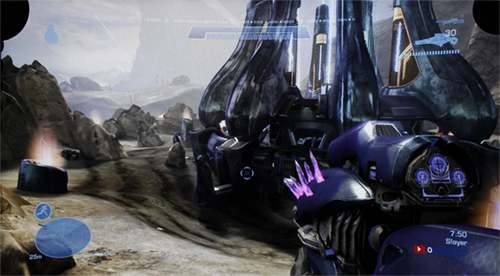
We measured the lag as being around 64ms normally, but fortunately the figure dropped to a more reasonable (but not outstanding) 38ms when we labelled the video input as “PC”, which bypasses extra processing. For video gaming, picture quality very much takes a back-seat to responsiveness – something we hope TV manufacturers remember with their “Game Mode” features in 2011. TV makers have not been kind to gamers this year (even Panasonic has started to produce some slower flat-panel televisions), and in this writer’s opinion, input lag is the single biggest problem with current HDTVs.
On a brighter note, since the LG 42LE5900 does not feature the unwanted edge enhancement that some 2010 LG HDTV models have previously suffered from, the jaggies that exist in the game due to the Xbox 360’s hardware limitations were not emphasised more than necessary.
The LG 42LE5900 is a good LED-based LCD HDTV. With only minimal configuration, users can enjoy natural, tint-free pictures – provided they use one of the more in-spec picture modes, such as “ISF Expert1”, of course. After a full calibration, which the LG 42LE5900 supports with its in-depth “Expert Control” menu, Greyscale neutrality is as perfect as is humanely possible (check out those charts again). Colour is also very good, with only minor inaccuracies which aren’t detectable in isolation, without a side-by-side reference display.
So, how does it miss a clearer “Recommended” rating? The IPS LCD panel fitted to the LG 42LE5900 does not produce deep blacks on its own, and instead requires users to use the sometimes noticeable Local Dimming option to produce dark scenes with a suitable level of “punch” (although we should also mention that being IPS based, the LG 42LE5900 does feature viewing angle clarity that’s very good for an LCD set). Additionally, unwanted video processing can sometimes cause the picture to appear unnaturally and selectively smoothed over with film material (something we’re asking LG to investigate and hopefully fix). Do also remember that the rare “smoothing” issue will likely only be visible on the highest quality sources such as Blu-ray movies; it’s likely to remain largely unseen with inherently softer HD television channels. Meanwhile, for video gamers, input lag responsiveness is merely average.
The current going rate of around £600 is really not bad value on paper, but these issues do hurt the LG 42LE5900’s credentials, given the alternatives. Yet again, LG are so, so close to having an easily recommendable HDTV display, but yet again, we have to remind more demanding users that there are some quirks to anticipate as part of the package.

The final settings on our LG 42LE5900 review sample after calibration in [ISF Expert1] mode has been published on our Facebook page.
<!-- google_ad_client = 'pub-2887677957235196'; google_ad_slot = '0693194791'; google_ad_width = 336; google_ad_height = 280; //-->